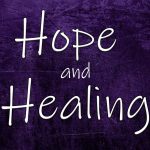 Today’s readings are a combination of the well-known (the Gospel) and the “what’s-going-on” (Ezekiel). The former is the familiar story of the man, afflicted for 38 years, who encounters Jesus, is healed and has hope restored. The latter is a grand vision of living waters flowing from the Temple into all the land bringing abundance and life.
Today’s readings are a combination of the well-known (the Gospel) and the “what’s-going-on” (Ezekiel). The former is the familiar story of the man, afflicted for 38 years, who encounters Jesus, is healed and has hope restored. The latter is a grand vision of living waters flowing from the Temple into all the land bringing abundance and life.
The Ezekiel reading is the follow-on to the “dry bones’ vision the prophet had just proclaimed. In his vision, the prophet finds himself standing in a valley full of dry human bones. Before him, the bones begin to move and assemble into human figures, skeletons rising and begin to stand. Almost as in modern computer-generated visual effects, the skeletons begin to receive layers of living flesh: tendons, muscles, organs and skin. They then arise, standing upright, alive and vital. These are the Israelites living in exile who are returning to Jerusalem.
So too, the man in the Gospel is revitalized, arises restored, and standing upright takes his mat and returns to the fullness of life.The first reading for today follows the dry-bones account. It is a vision of the restored, returned people of Israel and their mission to the world. They are to carry the story of the healing power of God into the world. Ezekiel portrays that mission as living waters flowing from the Jerusalem Temple into the world, bringing life – an image akin to the restoration of the Garden of Eden. The Prophet Isaiah has a similar passage but portrays it as a light shining from the Temple on Zion, calling all the nations to the Glory of God.
In between today’s readings is the responsorial psalm and its refrain: “The Lord of hosts is with us.” (Ps 46)
In the Ezekiel reading, he never calls the city at the center of the vision, Jerusalem. It is a new city simply called “The LORD is there.” (Ez. 48:35) In the gospel, the Lord is there.
And today in our celebration of this Eucharist, the Lord is here. May our dry bones be lifted up and restored that we may proclaim God’s hope and healing to a waiting world.